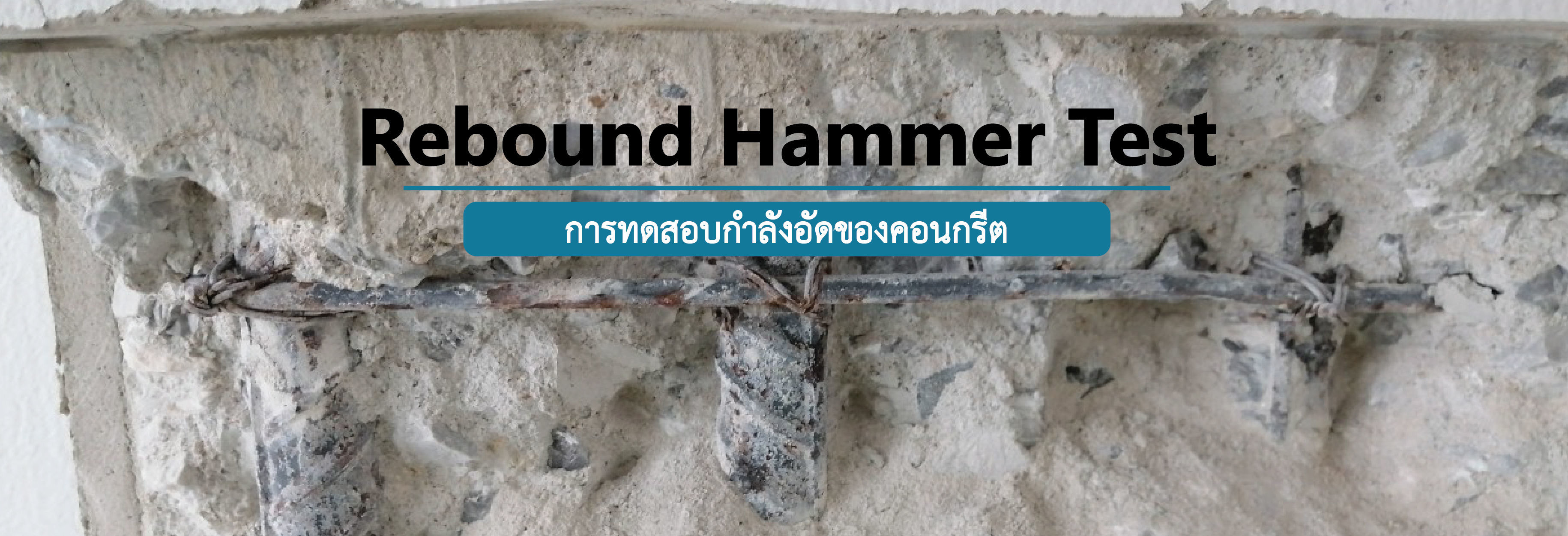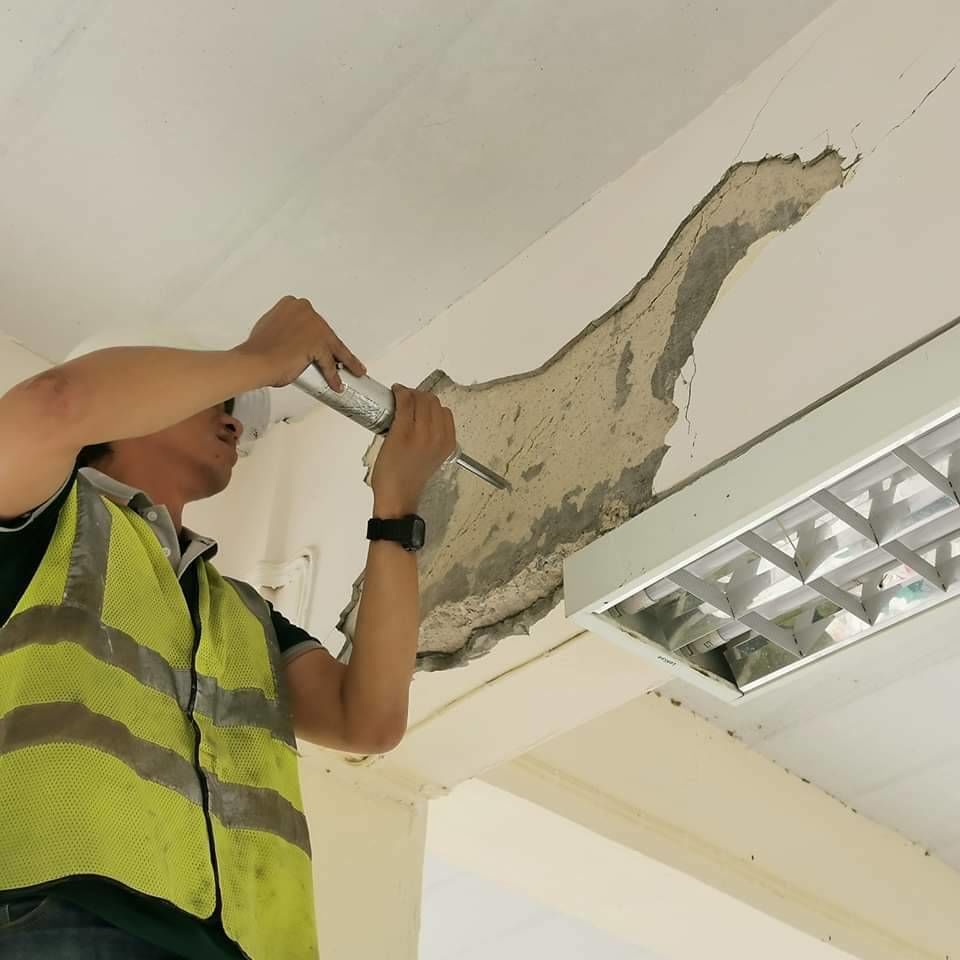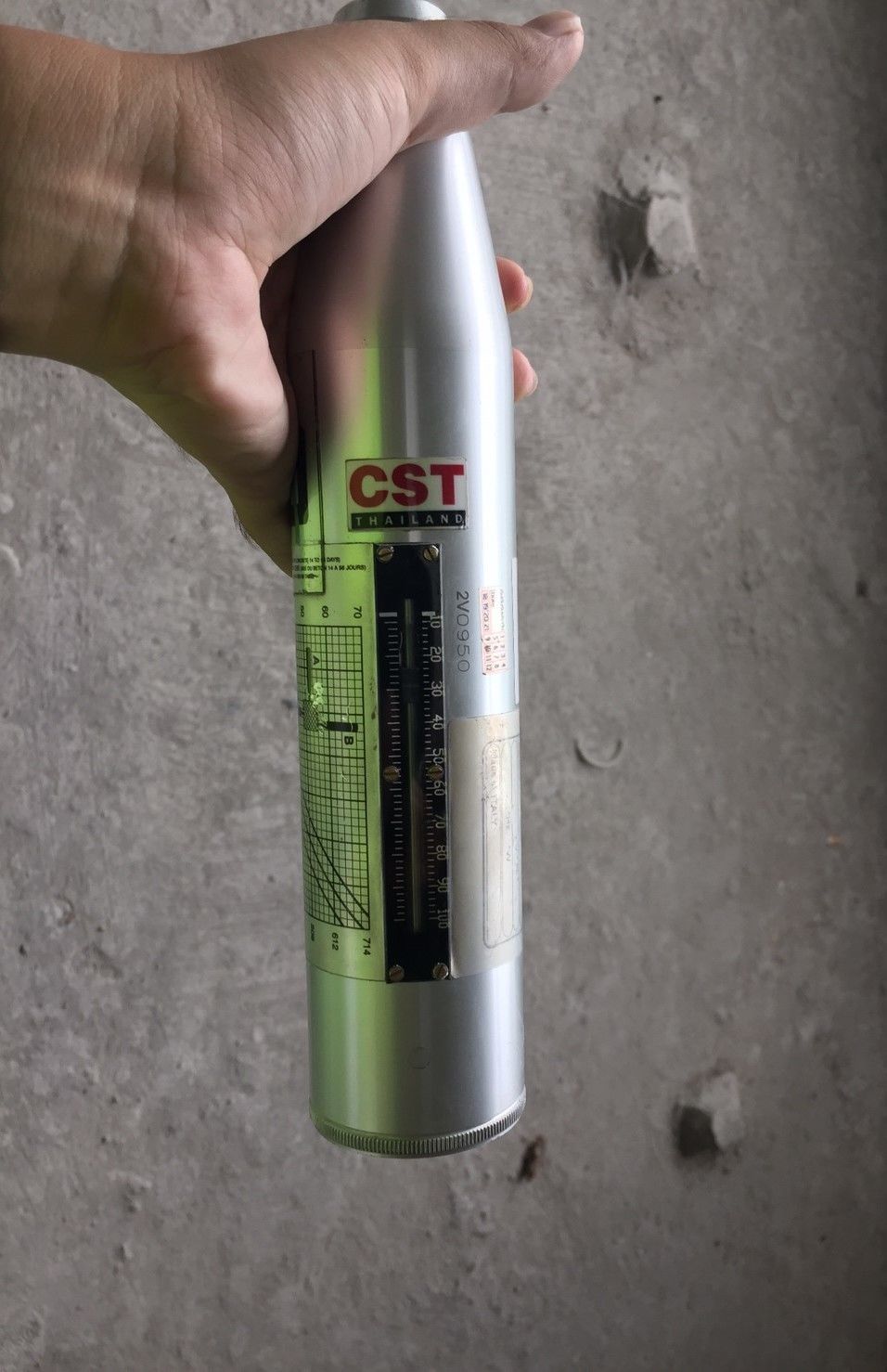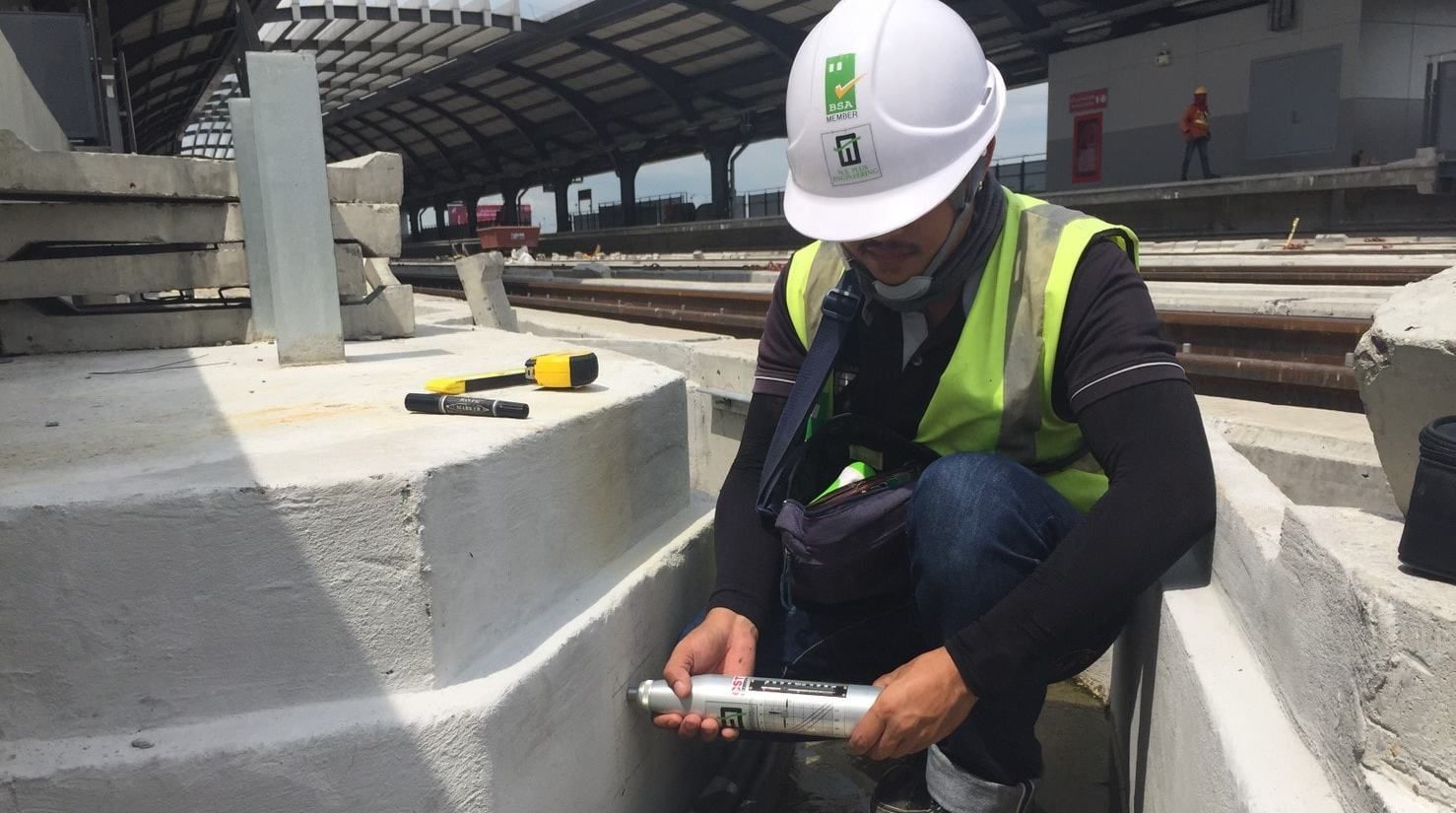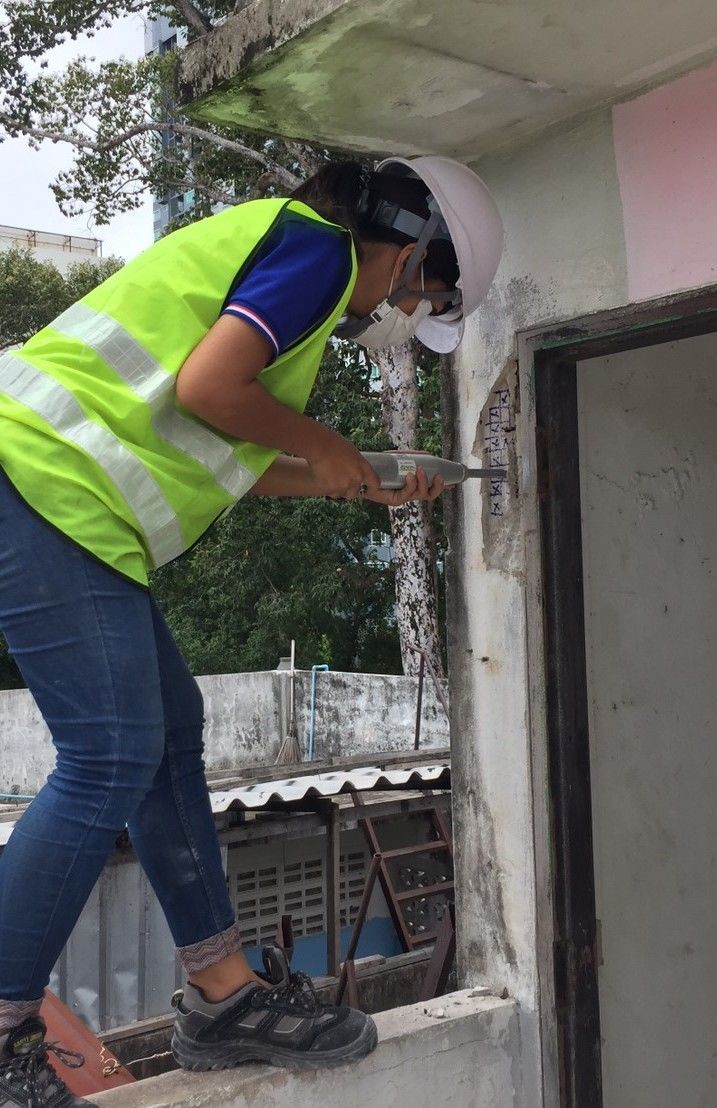Rebound Hammer
เป็นการทดสอบ เพื่อประเมินค่ากำลังอัดของคอนกรีตในโครงสร้างแบบไม่ทำลาย (NON-DESTRUCTIVE TEST) ตามมาตรฐาน ASTM C805
อย่างไรก็ตามการทดสอบโดยวีธีการไม่ทำลาย เป็นวิธีการทดสอบประเมินผลทางอ้อม ดังนั้นความแม่นยำในการวัดค่าคุณสมบัติต่างๆ ของคอนกรีตจึงน้อยกว่าการทดสอบในห้องปฏิบัติการ
เครื่องมือที่ใช้คือ Rebound Hammer ซึ่งใช้หลักการกระแทก และกระดอนกลับ (Rebound) ของสปริงหรือมวลยืดหยุ่น กำลังที่กระดอนกลับ (Rebound) จะแปรผันกับค่าความแข็งแรงของผิวที่ทดสอบ
- ตรวจสอบสภาพผิวตัวอย่างทดสอบ ขัดผิวที่ต้องการทดสอบให้เรียบ ถ้าผิวโค้งนูน หริอ ผิวเว้าจะมีผลต่อการRebound ของ Rebound Hammer เนื่องจากผิวที่โค้งนูนจะทำให้ค่าที่อ่านได้ต่ำกว่าค่าความเป็นจริง ส่วนผิวที่เว้าจะทำให้ค่าที่อ่านได้สูงกว่าค่าความเป็นจริง
- จัดแบ่งพื้นที่ตัวอย่างทดสอบให้มีตำแหน่งการยิงไม่น้อยกว่า 10 ตำแหน่ง และแต่ละตำแหน่งห่างกันอย่างน้อย 2.5 cm
- ทำการกด Rebound Hammer ในทิศทางที่ตั้งฉากกับผิวตัวอย่าง พร้อมบันทึกค่า Rebound Number และทิศทางการกด ซึ่งมีด้วยกัน 3 ทิศทาง ได้แก่ กดในแนว
นอน, แนวตั้งแบบยิงขึ้น หรือแนวตั้งแบบยิงลง เนื่องจากแต่ละทิศทางจะใช้กราฟในการปรับค่า Rebound Number เป็นค่า Strength of Concrete ที่แตกต่างกัน - นำค่า Rebound Number ที่ทดสอบได้อย่างน้อย 10 ตำแหน่ง และตัดค่าการกระแทกที่มีค่าต่างจากค่าเฉลี่ยมากกว่า 6 และเฉลี่ยค่าที่เหลือใหม่ หากมีค่าตั้งแต่สามค่าขึ้นไปที่ต่างจากค่าเฉลี่ยเกิน 6 ให้ทดสอบค่าชุด นำค่าเฉลี่ยที่ได้มาหาค่า Strength of Concrete จากกราฟที่ใช้ในการปรับค่า
สำหรับมาตรฐานในการทดสอบหากำลังรับนํ้าหนักของโครงสร้างโดยวิธีการไม่ทำลาย (NDT) จะอ้างอิงมาตรฐานของ ASTM C-805
The Test is also known as the Schmide hammer of impact hammer, and is a non-destructive method of testing concrete. The test is based on
the principle that the rebound of an elastic mass depends on the fardness of the surface against which the mass impinges
Selection of Surface
Concrete members to be tested shall be at least 100 mm thick and fixed within a structure. Smaller specimens must be rigidly supported. Areas exhibiting honeycombing, scaling, rough texture, or high porosity should be avoided. Concretes should be approximately the same age and moisture condition in order to be compared. Dry concretes give higher rebound munbers than wet concrete, and the surface layer of concrete maybe carbonated, yielding higher rebound numbers.
Preparation of test surface
A test area shall be at least 150 mm in diameter. Heavily testured, soft, or surfaces with loose mortar shall be ground smooth with the acrasive stone. Smoothformed or toweled surface shall be tested without grinding. Concretes over 6 months old may rewuire grinding to a depth of 5 mm if they are to be compare to younger concretes. Geinding to this depth is not feasible without power equipment.
Rebound Number of Hardened Concrete Profedure
- Firmly hold the instrument in a position that allows the plunger to strike perpendiculary to the surface tested. Gradually increase the pressure on the plunger until the hammer impacts.
- After impact, record the rebound number
- Take ten readings from each test area. No tro impact tests shall be closer together than 25 mm
Calculation
Discard readings differing from the average of 10 reading by more tha 5 units and determine the average of the remaining readings. If more than 2 readings dieer from the average by 7 units,discard the entires set of readings.


